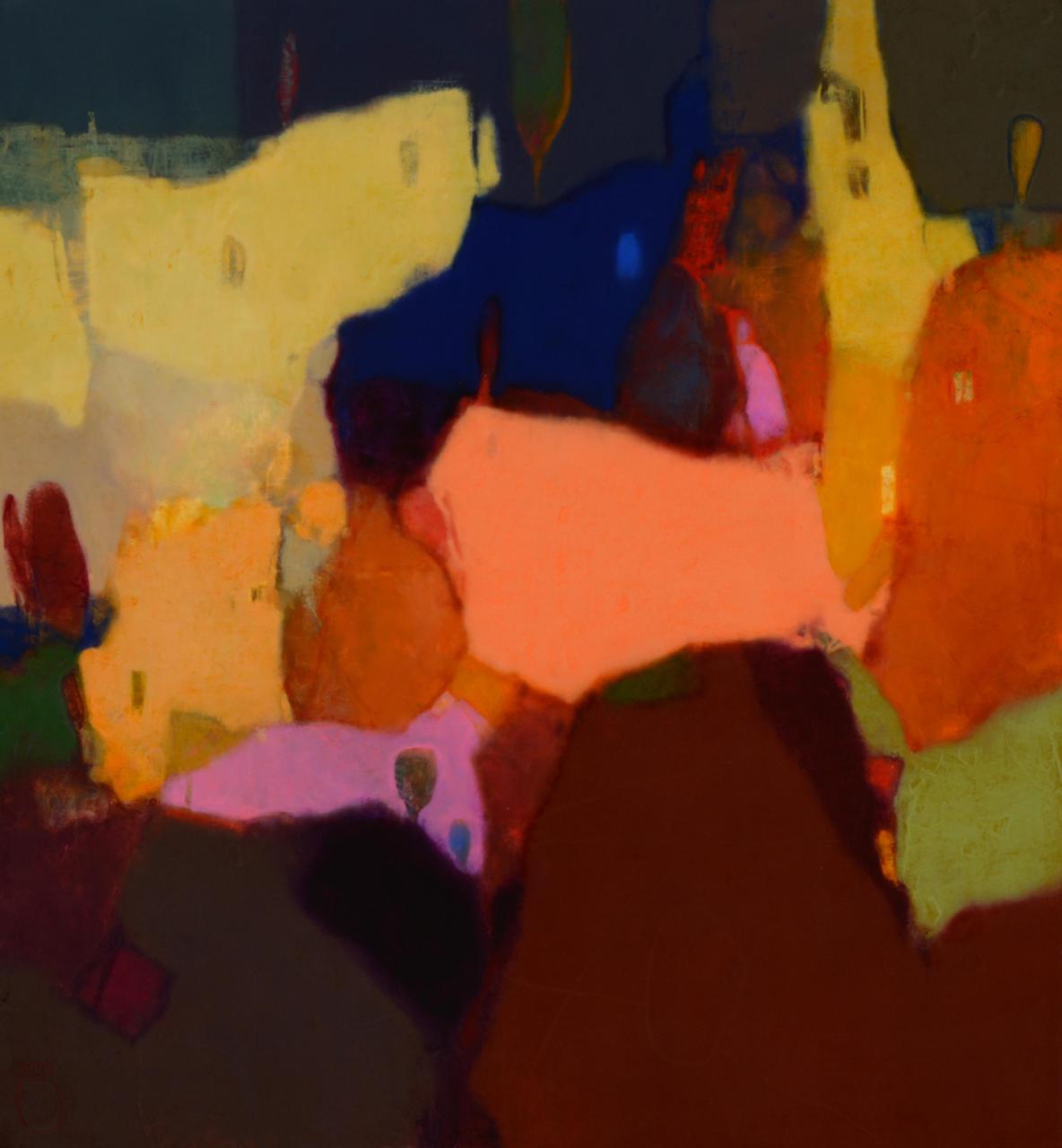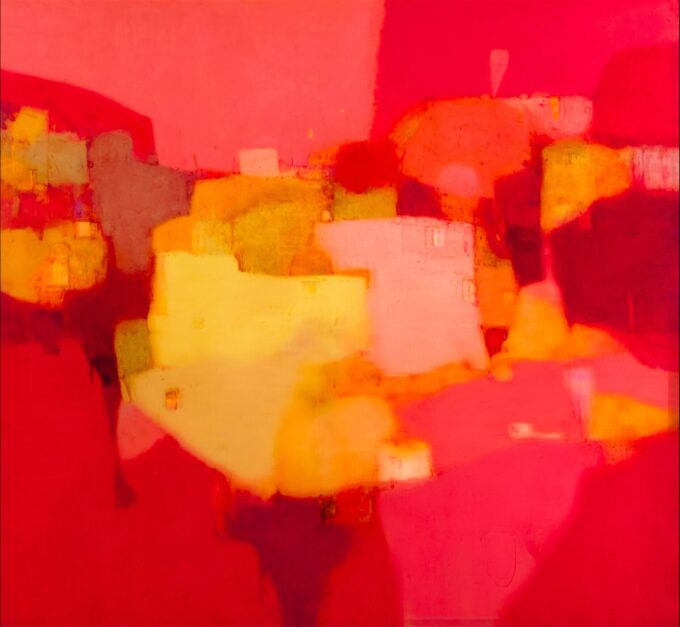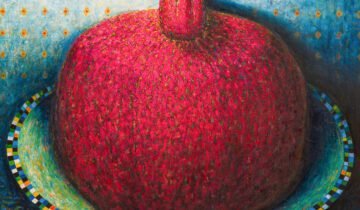Artist Spotlight is a recurring editorial series featuring distinguished and upcoming artists, showcasing and spotlighting their achievements and their art.
Mamuka Didebashvili (also known as Mamuka Dideba) was born in 1968 in Tbilisi, Georgia. His artistic journey began at the prestigious Nikoladze Art School, where he first encountered the technical foundations that would later define his distinctive style. From there, he continued his education at the Tbilisi State Academy of Arts, where he mastered both traditional techniques and began developing his unique artistic voice that bridges figurative and abstract realms.
For over two decades, Didebashvili has captivated audiences with his remarkable dual practice—meticulously rendered figurative portraits that reimagine Renaissance traditions alongside luminous abstract compositions that explore the transcendent possibilities of color. This duality is not a contradiction but rather a complete artistic vision, executed with extraordinary technical virtuosity and emotional depth.
Didebashvili’s artistic methodology draws deeply from the past while speaking to the present. He employs the intricate imprimatura technique popularized by Northern Renaissance masters like Jan Van Eyck—a painstaking layering of translucent paint that creates the distinctive luminosity characterizing his work. “A painting is complete only when the subject feels alive, almost ready to speak,” the artist has noted, revealing his commitment to bringing his subjects to the threshold of animation.

The power of Didebashvili’s art lies in its transformation of classical techniques into contemporary vision. His figurative paintings demonstrate an uncanny realism in the rendering of faces and hands, contrasted dramatically with clothing and backgrounds fragmented into geometric patterns of vibrant color. This technical approach creates a fascinating tension between precise representation and stylized abstraction—a visual dialogue between tradition and innovation.
Didebashvili’s figurative paintings reveal a masterful balance between technical precision and poetic interpretation. His distinctive characters—court figures, musicians, contemplative individuals with their symbolic objects—emerge from carefully composed backgrounds with a quiet theatrical presence. These enigmatic figures, rendered with meticulous attention to facial expression and gesture, invite viewers into a timeless visual dialogue. While his subjects often carry hints of gentle humor in their expressions or poses, they transcend simple narrative to become vessels for deeper philosophical reflection—embodiments of human essence captured with remarkable sensitivity and insight.
Through the power of his art, Didebashvili communicates narratives that transcend specific cultural contexts while remaining rooted in Georgian artistic heritage. His figures—whether holding vessels, sampling fruits, or playing instruments—exist outside of specific time periods, simultaneously medieval and contemporary. Each character emerges from monochromatic backgrounds with startling presence, their elongated features and penetrating gazes inviting extended contemplation.
In striking counterpoint to his detailed figurative work, Didebashvili creates abstract compositions of extraordinary emotional power. Here, he explores “absolute freedom” through sophisticated color relationships that create immersive visual experiences. His abstract works feature translucent colors that convey a sense of movement and transformation. The geometric color fields—irregular shapes of yellows, reds, blues, and ochres—create visual harmonies that evoke both landscape and pure emotional states.
The layered textures in Didebashvili’s abstract works become a mosaic of chromatic intensity; the colors, rich and emotive, pulsate with an inner life. The interplay of light and shadow on his canvas echoes the eternal contrast of life’s visibilities and obscurities, a testament to the human condition’s dynamism. Art, in Didebashvili’s vision, is a reflective surface, mirroring life in all its facets—its joys and sorrows, its simplicity and complexity.
Thus, as we navigate the gallery of Mamuka Didebashvili’s life’s work, we are not merely walking through an exhibition; we are traversing the corridors of human experience, guided by the subtle luminescence of his artistic vision. His contribution to contemporary art is significant not only for its aesthetic impact but also for its capacity to act as a bridge between epochs, connecting Renaissance traditions with contemporary sensibilities.
Mamuka Didebashvili Artworks
Didebashvili’s work has been exhibited extensively at art fairs across the globe, including venues in the UK, Ireland, the USA, Europe, and Russia. His paintings have made a lasting contribution to the Georgian avant-garde movement while speaking to universal themes that transcend cultural boundaries.
Whether through his Renaissance-inspired portraits or his luminous abstractions, Didebashvili transforms the ordinary into the transcendent, creating works of remarkable beauty and depth that invite repeated viewing and reflection. In his hands, the ancient traditions of painting are not merely preserved but renewed for contemporary audiences—a testament to his unwavering dedication to his craft and his singular artistic vision that bridges Eastern and Western traditions.
Mamuka Didebashvili’s art is a celebration, a narrative epic that continues to unfurl, drawing us into its embrace with each new piece. It challenges us to see art not just as a form of expression, but as a living, breathing entity that enriches our understanding of the world and our place within it.
.









